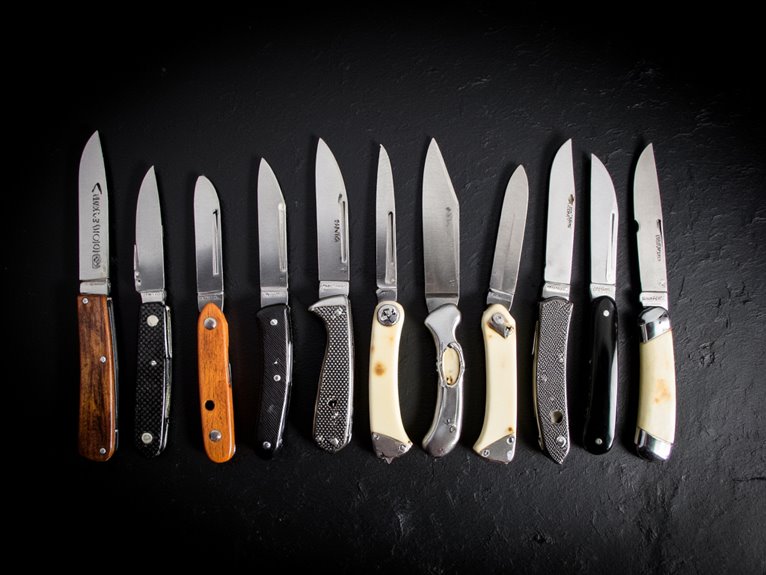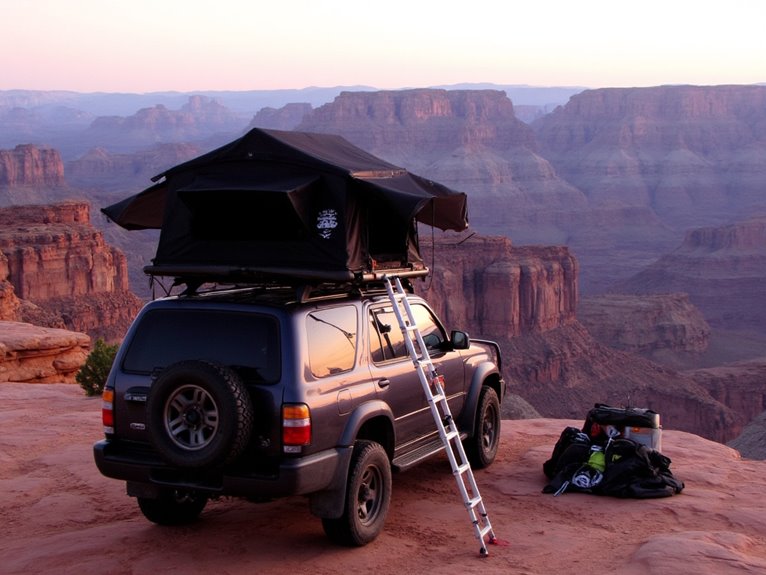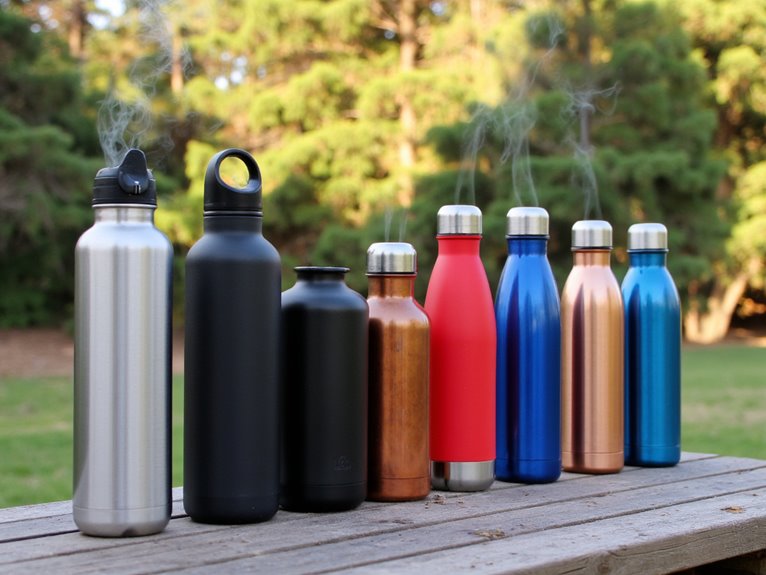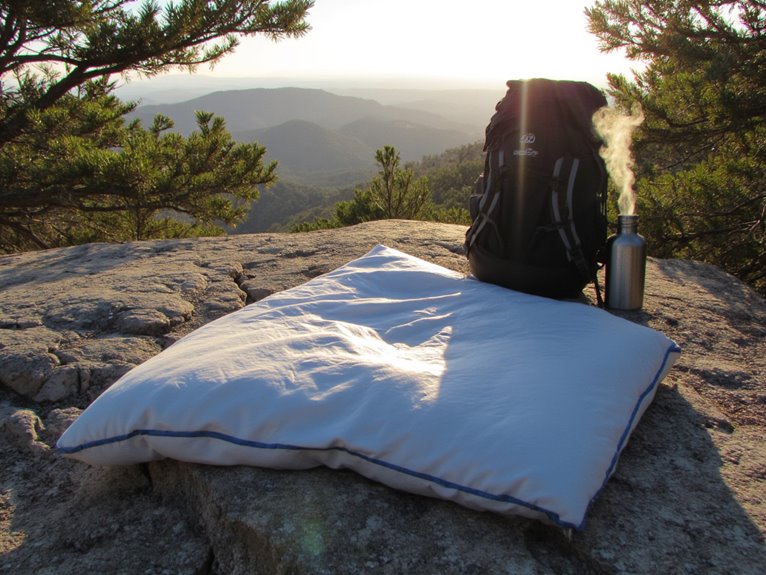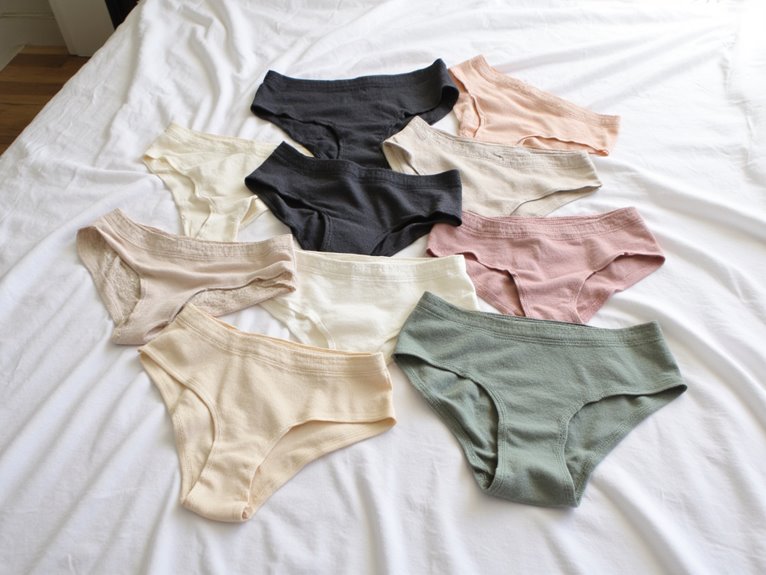How Do You Stop Condensation in a Swag?
To prevent condensation in a swag, combine ventilation, moisture reduction, and breathable materials. Promote adequate airflow within the swag by pitching it in a well-ventilated area, using mesh panels or ventilation flaps, and maintaining the ventilation system. Reduce moisture sources by minimizing wet items, drying gear, and avoiding cooking inside. Choose breathable materials, select a suitable ground tarp or mat, and limit cooking and hydration activities. Discover how to optimize these strategies and investigate additional solutions, such as condensation-reducing liners, to keep your swag dry and comfortable.
We are supported by our audience. When you purchase through links on our site, we may earn an affiliate commission, at no extra cost for you. Learn more. Last update on 7th January 2026 / Images from Amazon Product Advertising API.
Ventilate Your Swag Properly
Proper ventilation is crucial to preventing condensation, and maintaining adequate airflow within your swag is the first step in maintaining a dry and comfortable sleeping environment.
A well-ventilated swag allows moisture-laden air to escape, reducing the likelihood of condensation forming.
To achieve this, verify that your swag has breathable materials, such as mesh panels or ventilation flaps, that allow air to circulate freely.
Additionally, consider pitching your swag in a well-ventilated area, away from trees or other obstructions that may impede airflow.
Reduce Moisture Sources Inside
Eliminate excess moisture sources inside your swag by minimizing the number of wet items you bring inside, such as damp clothing or wet gear, to prevent them from releasing moisture into the air.
This simple yet effective step can substantially reduce condensation buildup.
Additionally, verify you dry your gear thoroughly before storing it in your swag to prevent moisture accumulation.
Avoid boiling water or cooking inside your swag as it releases excess moisture into the air.
By controlling moisture sources, you can create a drier environment that discourages condensation.
This proactive approach will help you enjoy a more comfortable and dry camping experience.
Use a Ground Tarp or Mat
When using a ground tarp or mat to stop condensation, there are two key factors:
the size of the tarp and the material of the mat.
A tarp that is too small will not provide adequate coverage, while a mat made of the wrong material can actually exacerbate the condensation issue.
Tarp Size Matters
Ideal tarp size is critical to preventing condensation, as an undersized ground tarp or mat can leave vulnerable areas exposed to moisture.
A tarp that is too small will not provide adequate protection, allowing moisture to seep in and condense inside the swag.
Conversely, a tarp that is too large can be cumbersome and difficult to manage.
A general rule of thumb is to choose a tarp that is at least 1.5 to 2 times the size of the swag.
This will guarantee that the tarp provides thorough coverage, preventing moisture from seeping in and reducing the risk of condensation.
Mat Material Matters
The type of material used for the ground tarp or mat is crucial in preventing condensation, as it can significantly impact the overall performance of your swag's waterproofing system. A breathable and water-resistant material is essential to prevent moisture buildup.
Breathability: Look for materials with high moisture vapor transmission rates (MVTR) to allow moisture to escape.
Water resistance: A water-resistant treatment or coating can help prevent water from seeping into the material.
Durability: Choose a material that can withstand rough outdoor conditions and heavy use.
Weight and packability: Consider a lightweight and compact material for easy transport.
Cost and value: Balance the cost of the material with its performance and durability.
Improve Air Circulation Methods
Properly designed air circulation systems can substantially reduce the likelihood of condensation by efficiently removing moisture-laden air from the affected area.
Effective air circulation methods involve creating a consistent flow of air to dissipate moisture buildup. This can be achieved by strategically positioning vents, windows, and doors to facilitate cross-ventilation.
Additionally, incorporating mesh panels or breathable fabrics can improve airflow and reduce humidity.
Guarantee that air circulation systems are tailored to the specific swag design and climate to maximize their effectiveness.
Choose Breathable Swag Materials
By selecting swag materials that allow for airflow and moisture wicking, outdoor enthusiasts can further reduce the likelihood of condensation and create a more comfortable sleeping environment.
This is especially important for swags, as trapped moisture can lead to unpleasant sleeping conditions.
When choosing breathable materials, consider the following:
- Look for fabrics with high moisture-wicking properties, such as nylon or polyester.
- Opt for mesh panels or ventilation systems to promote airflow.
- Select materials with a water-resistant treatment to prevent moisture from entering the swag.
- Consider using natural fibers like cotton or bamboo, which breathe more easily than synthetic materials.
- Avoid using waterproof materials, as they can trap moisture inside the swag.
Limit Cooking and Hydration
When camping in humid or cold climates, minimizing cooking and hydration activities inside the swag can help reduce condensation.
This is because cooking and hydrating produce moisture, which can contribute to condensation buildup.
To limit condensation, prepare meals and hydrate outside the swag or in a well-ventilated area.
If cooking inside is unavoidable, use a portable stove with a low flame to minimize moisture release.
Additionally, avoid boiling water or cooking high-moisture foods like pasta or rice.
Consider a Condensation-Reducing Liner
When selecting a condensation-reducing liner, it's essential to prioritize materials that effectively block moisture while still allowing for airflow.
Breathable fabric options, such as those featuring micro-perforations or mesh panels, can help mitigate condensation by facilitating the exchange of air.
Moisture-Blocking Materials Matter
In buildings prone to condensation, incorporating moisture-blocking materials into the design can substantially reduce the risk of water damage and mold growth.
This concept can be applied to swag design as well. By using materials with moisture-blocking properties, you can minimize the accumulation of condensation and prevent water damage.
Some effective moisture-blocking materials to examine include:
- Waterproof and breathable membranes like polyurethane or silicone coatings
- Water-repellent treatments for fabrics
- Moisture-wicking materials like polyester or nylon
- Waterproof laminates or films
- Hydrophobic nanomaterials
Additionally, some other effective moisture-blocking materials worth exploring comprise:
Breathable Fabric Options
Several breathable fabric options can be utilized as a condensation-reducing liner, providing a reliable barrier against moisture accumulation.
When selecting a breathable fabric, consider materials with high moisture vapor transmission rates (MVTR). These materials allow for the passage of moisture vapor while preventing liquid water from penetrating.
Nylon, polyester, and eVent fabrics are popular choices for their breathability and water-resistance. These fabrics can be used as a liner or integrated into the swag's design to minimize condensation.

